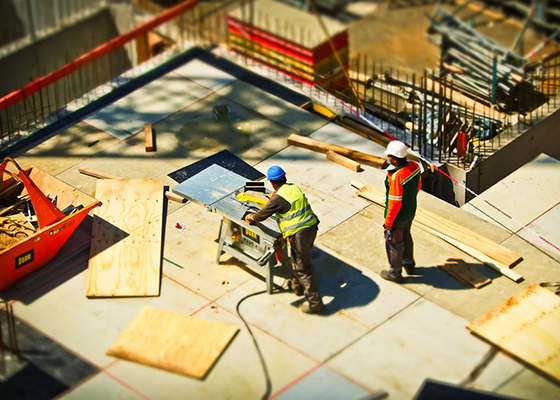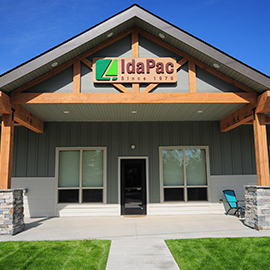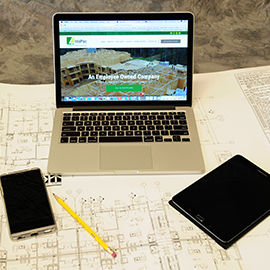National Supplier to the Construction Industry
Lumber and Building Materials

Idaho Pacific Lumber Company, also known as IdaPac, was founded on the belief that the lumber industry should supply builders with affordable and reliable options when it comes to purchasing high volumes of building materials. We work with a large and diverse network of lumber and panel mills, EWP manufacturers, wholesalers, and national distributors so you can get the best doors, cabinets, and millwork available. We pride ourselves on offering superior service and customer satisfaction at the most competitive rates available. Whether you need materials for a multifamily residential home, commercial project, or a single-family tract house,we can help.
WHAT WE OFFER:
- Rough framing materials
- Panel products
- Engineered wood products
- Siding
- 装饰和栏杆
- Specialty wood products
- Miscellaneous
- Metal & hardware
- Roofing & building paper
- Insulation
- Crane mats
- Doors and Cabinets

Framing Lumber
在IdaPac,我们自豪地提供一些最好的framing lumber to our builders, manufacturers, and distributors. Also known as structural wood, framing lumber is a specific kind of wood that is often used for house framing. In the layman’s terms, framing is the fitting together of pieces to give a structure support and shape. We carry a wonderful selection of framing lumber for all of your construction and project needs. Let’s take a look at some of the different families of framing lumber from which to choose, below.
Light Structural Lumber
This lumber is often used in the residential construction of homes, condominiums, and apartments. It is usually milled from softwood trees like the spruce, fir, and pine tree. The wood is then machine planed to fit standard dimensions such as 2x4”, 2x8”, etc.
Heavy Timber
This type of timber refers to any dimensional lumber that is over 4.5”. It is normally used for post-and-beam construction. These large dimensions of wood can be used to support heavy loads, while also offering fire-resistant characteristics.
Finger-Jointed Lumber
Also known as end-glued lumber or end-jointed lumber, finger-jointed lumber is manufactured using short and dry pieces of wood. These wood pieces are usually machined on each end, and they are joined using a unique water repellent structural adhesive. As one of the more ecological wood products, manufacturers and construction companies love to use this type of wood on their projects.

Engineered Wood
Unlike standard wood, engineered wood requires significantly more processing. As you may already know, engineered wood tends to be a bit more expensive than light structural lumber and heavy timber. Engineered wood has a variety of technological and ecological advantages, and it can facilitate large spans without the need for large trees. If you’re on the fence about purchasing engineered wood for your upcoming project, we’re here to put your mind at ease. In most cases, the added cost you face from purchasing engineered wood will be recouped through significant labor savings. Engineered framing materials are a favorite among construction companies because they are straight and consistent. There are many different kinds of engineered wood products on the market today. Let’s look at some popular options.
Glulam
这是一种多层的木头非常strong and easy to work with, and is most often used in roof framing projects. It is manufactured using several thicknesses of thin pieces of solid wood, that are held together with mildew-resistant phenol glues (these glues emit a very minimal amount of toxic materials). This wood is an excellent option if you need to produce posts and beams that are suited for wide spans.
Cross-Laminated Timber
This type of timber is manufactured using several sheets of wood that are stacked on top of eachother and eventually glued together. Due to this wood’s popularity in the European market over the past 20 or so years, cross-laminated timber (CLT) has only recently become available to consumers in North America. In addition to its fantastic thermal and acoustic properties, CLT is also highly resistant to fire and can provide exceptional structural strength to your building. Whether you need to build load-bearing walls, floors, or roofs, you’ll love the benefits that cross-laminated timber has to offer.
Oriented Strand Board
Also known as OSB or Aspenite, oriented strand board is a wood panel that is fabricated using very small strips of wood. It’s important to note that this wood is not as strong as plywood, nor is it as weather resistant. Normally used as exterior sheathing, OSB uses small pieces of waste wood, and bonds them together using a phenol formaldehyde.
Plywood
Plywood can be used for a variety of construction projects and manufacturing tasks. This kind of wood is often used as studs in load-bearing walls, floor beams, and even roof supports. Plywood can usually be found as a 4x8’ panel that is created from thin sheets of wood veneer, which are eventually bonded together with a glue. Commonly found on residential construction sites in exterior walls, flooring substrates, and interior finishing applications, plywood is a favorite among our lumber customers.
I-Joist / Floor-Joist
An I-joist is a horizontal structural membrane that that if often used in framing to span an open space. They are usually placed between beams that transfer loads to vertical members. When you use an i-joist in a floor framing system, the joist provides additional strength and structure to the subfloor sheathing. As a result, it allows the joist to function as a horizontal diaphragm. Most joists are constructed of engineered wood, or steel.
Laminated Veneer Lumber (LVL)
Laminated veneer lumber, also called LVL, is manufactured by bonding thin wood veneers together under extreme heat and pressure properties. Often used for headers, beams, and rim board, LVL offers advantages over your normal milled lumber. Thanks to the composite nature of LVL, this wood is much less likely to warp or shrink.
Laminated Strand Lumber (LSL)
Another type of engineered wood product is laminated strand lumber or LSL. This lumber can be used for a variety of applications like millwork, windows, door headers, and more. To make this type of wood, manufacturers press various strips of scrap wood together into solid joists and studs. A major perk of LSL is that it is designed to be weather resistant, making it much less likely to warp and split.
Rim Board Lumber
A rim board is a unique piece of wood that fills the space between the sill plate and bottom plate of a wall. This wood offers high strength and structural reliability, making it ideal for an array of construction projects.

Lumber Grade
Yard lumber is a type of lumber that is used for ordinary construction and building purposes. This type of wood is normally graded visually. This means that an inspector will look at the lumber’s appearance to give it a grade. Yard lumber can be broken down into two sub-categories including common and select.
Common yard lumber is very well suited for both construction and utility purposes. This lumber is graded using a number classification, such as:
No. 1 Common
This is the highest quality of common lumber. This lumber will have a few small, tight knots.
No 2. Common
Often used for paneling and shelving, this kind of lumber has larger knots than No. 1 Common. This lumber can also be used for general woodworking projects.
No 3. Common
This wood can be damaged or blemished, making it well-suited for things like fences and crates. It has bigger knots than the No. 2 Common.
Now that you know about common yard lumber, let’s discuss select yard lumber. This kind of lumber tends to look much nicer than common lumber. This is because it has very few to no knots present. But to this lumber’s fine appearance, it is intended for use with natural or painted finishes. Select yard lumber is graded using a letter classification, such as:
C Select
This lumber is virtually clear of any defects and is widely used for interior trims and kitchen cabinets.
D Select
This lumber has a very fine appearance but may contain a few small, dime-sized knots.

乡村小道ctural Lumber
If you’ve ever picked up a 2x4 or a 4x4 at your local department store, then you’ve bought structural lumber. As you may already know, this kind of lumber follows a standard dimension for both thickness and width. In America, the most common kind of structural lumber sizes are 4x4s, 2x4s, 2x6s, 2x8s, and 2x10s. Since structural lumber is heavily used in the construction industry, it is usually machine stress graded so that builders know the bending stress of the board. Structural lumber can be classified into a few distinct categories. Let’s take a look at them below.
Light Framing
This kind of lumber is two to four inches thick and four inches wide. It can be graded as: construction, standard, or utility.
- Construction:This lumber has small, tight knots.
- Standard:This lumber can have splits at the end of the board, as long as they are no longer than the actual width of the board. Tight knots and holes are permitted.
- Utility:Splits are also allowed on this type of lumber if they are equal to 1/6th the width of the wood. Knots are not restricted.
乡村小道ctural Light Framing
Lumber that is two to four inches thick, and two to four inches wide. This lumber can be graded as select structural, 1, 2, or 3.
Select Structural
This lumber is free and clear of knots. The knots that do exist on these pieces will be small and tight. This is the strongest of the four grades.

No. 1
Small, tight knots up to 1 to 1/2” are allowed. Loose knots may only be 1” wide and can only appear once every three feet.
No 2.
This lumber can feature well-spaced knots of any quality up to 2” wide. It can also have knot holes that are 1 to 1/4” wide every two feet.
No. 3
This lumber can also feature knots of any quality and can be up to 2 to 1/2” wide. Knotholes are allowed on these pieces as well.
IdaPac has been a leading provider of commodity wood products for high-density housing and commercial building projects across America for nearly four decades. Our main goal has always been to provide the construction industry with the best possible prices, service, and customer satisfaction. Our approach is three-pronged, as we strive to:
- Be the supplier of choice for builders across the country
- Be the customer of choice to mills, manufacturers, distributors, and wholesalers
- Be the employer of choice to our employee-owners


